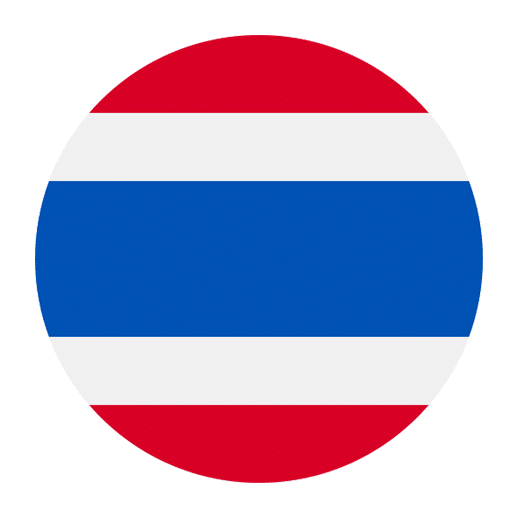Learning a new language is always a fascinating journey, and diving into Thai is no different. One of the most enchanting aspects of any language is how it describes the world of sounds and music. In Thai, there are unique phrases and expressions that capture the essence of various sounds, from the rustling of leaves to the rhythm of traditional music. Understanding these phrases not only enriches your vocabulary but also gives you a deeper insight into Thai culture and how Thais perceive the auditory world around them.
Describing Everyday Sounds
Natural Sounds
1. **เสียงลม (sĭang lom)** – This phrase translates to “the sound of the wind.” It is used to describe the gentle, soothing noise the wind makes as it flows through trees or across open fields.
2. **เสียงน้ำไหล (sĭang nám lăi)** – This means “the sound of flowing water.” It captures the serene and continuous noise of rivers, streams, or any flowing water source.
3. **เสียงนกร้อง (sĭang nók róng)** – Translated as “the sound of birds chirping,” this phrase is often used to describe the pleasant, melodic sounds produced by birds, typically in the early morning.
4. **เสียงฝนตก (sĭang fŏn tòk)** – This means “the sound of rain falling.” It’s a comforting and rhythmic sound that many find soothing, especially during the rainy season.
Human and Animal Sounds
1. **เสียงหัวเราะ (sĭang hŭa rór)** – This phrase translates to “the sound of laughter.” It’s often used to describe the joyful and contagious noise made when people laugh.
2. **เสียงร้องไห้ (sĭang róng hâi)** – Meaning “the sound of crying,” this phrase captures the sorrowful and often heart-wrenching noise associated with tears and sadness.
3. **เสียงเห่า (sĭang hăo)** – This is “the sound of barking” and is used when referring to dogs. It’s an everyday sound in many neighborhoods.
4. **เสียงแมวร้อง (sĭang maew róng)** – This translates to “the sound of a cat meowing.” It’s the familiar and often comforting sound made by cats.
Describing Musical Sounds
Instrumental Sounds
1. **เสียงกลอง (sĭang glong)** – This means “the sound of drums.” Drums play a significant role in traditional Thai music, providing rhythm and energy.
2. **เสียงระนาด (sĭang rá-nàat)** – This phrase translates to “the sound of the ranat,” a traditional Thai xylophone. The ranat produces a melodic and resonant sound that is central to many Thai musical compositions.
3. **เสียงขลุ่ย (sĭang kù-lùi)** – Meaning “the sound of the flute,” this phrase is used to describe the sweet, airy tones produced by Thai flutes, often used in classical Thai music.
4. **เสียงซอ (sĭang sor)** – This translates to “the sound of the saw,” which is a traditional Thai string instrument similar to a fiddle. Its sound is rich and emotive, often used in folk music.
Qualities of Music
1. **เพลงเพราะ (pleng prór)** – This phrase means “beautiful music.” It’s a compliment often used when someone finds a piece of music particularly pleasing to the ear.
2. **เพลงสนุก (pleng sà-nùk)** – Meaning “fun music,” this phrase describes lively and upbeat music that makes people want to dance and enjoy themselves.
3. **เพลงเศร้า (pleng sâo)** – This translates to “sad music.” It’s used for music that has a melancholic or emotional tone, often evoking feelings of sadness or nostalgia.
4. **เพลงช้า (pleng cháa)** – Meaning “slow music,” this phrase describes music with a slower tempo, often used for romantic or reflective moments.
Expressions for Describing Sound Intensity and Quality
Sound Intensity
1. **เสียงดัง (sĭang dang)** – This means “loud sound.” It’s used to describe any noise that is high in volume, whether it’s music, conversation, or a sudden noise.
2. **เสียงเบา (sĭang bao)** – This phrase translates to “soft sound.” It’s used for quieter noises that are gentle and not overwhelming.
3. **เสียงแผ่วเบา (sĭang pàew bao)** – Meaning “faint sound,” this describes sounds that are barely audible, often requiring close attention to hear.
4. **เสียงก้อง (sĭang gông)** – This means “echoing sound.” It’s used to describe sounds that reverberate and are heard repeatedly due to their reflection off surfaces.
Sound Quality
1. **เสียงชัดเจน (sĭang chát jeen)** – This phrase translates to “clear sound.” It’s used to describe sounds that are crisp and easily distinguishable.
2. **เสียงมัว (sĭang mua)** – Meaning “muffled sound,” this describes sounds that are not clear, often due to being obstructed or distant.
3. **เสียงนุ่มนวล (sĭang nôm nuan)** – This means “smooth sound.” It’s used for sounds that are pleasant and gentle to the ear, often describing certain musical tones.
4. **เสียงแหลม (sĭang lăem)** – This translates to “sharp sound.” It’s used for high-pitched sounds that are piercing and can sometimes be uncomfortable to hear.
Common Phrases in Thai Music Culture
Traditional Music References
1. **ดนตรีไทย (don-dtree Thai)** – This phrase means “Thai music.” It encompasses all genres of traditional Thai music, from classical to folk.
2. **วงมโหรี (wong má-hŏr-ee)** – This means “Mahori ensemble,” referring to a traditional Thai musical ensemble that includes various instruments like the ranat, saw, and drums.
3. **เพลงลูกทุ่ง (pleng lôok tûng)** – This translates to “luk thung music,” a popular genre of Thai country music that often reflects rural life and stories.
4. **เพลงพื้นบ้าน (pleng pêun bâan)** – Meaning “folk music,” this phrase describes traditional music that originates from various regions of Thailand, often passed down through generations.
Modern Music References
1. **เพลงป๊อป (pleng póp)** – This phrase means “pop music.” It’s used to describe contemporary popular music that is widely listened to in Thailand.
2. **เพลงร็อค (pleng rók)** – Meaning “rock music,” this describes a genre that has a strong following in Thailand, known for its energetic and powerful sound.
3. **เพลงแร็พ (pleng ráp)** – This translates to “rap music.” It’s a growing genre in Thailand, characterized by rhythmic speech and street culture influences.
4. **เพลงอินดี้ (pleng in-dee)** – Meaning “indie music,” this phrase describes independent music that is often produced outside of major record labels, known for its unique and experimental sounds.
Using Sound Descriptions in Conversations
To effectively use these phrases in conversations, it’s essential to understand their context and how they fit into everyday speech. Here are some examples of how you can incorporate these sound descriptions into your Thai conversations:
1. **เมื่อเช้านี้, ฉันได้ยินเสียงนกร้องที่สวนหลังบ้าน (Mêua cháo née, chăn dâi yin sĭang nók róng têe sŭan lăng bâan)** – “This morning, I heard the sound of birds chirping in the backyard.”
2. **ฉันชอบฟังเพลงเพราะๆ ตอนขับรถ (Chăn chôrp fang pleng prór prór dton kàp rót)** – “I like listening to beautiful music while driving.”
3. **เสียงฝนตกทำให้ฉันรู้สึกผ่อนคลาย (Sĭang fŏn tòk tam hâi chăn róo sèuk pòn klai)** – “The sound of rain falling makes me feel relaxed.”
4. **ดนตรีไทยมีเสียงที่ไพเราะและน่าฟังมาก (Don-dtree Thai mee sĭang têe pai-rór láe nâa fang mâak)** – “Thai music has a very melodious and pleasant sound.”
5. **เสียงกลองในเพลงนี้ดังมาก (Sĭang glong nai pleng née dang mâak)** – “The sound of the drums in this song is very loud.”
By integrating these phrases into your conversations, you’ll be able to describe sounds and music more vividly and authentically, enhancing your overall communication skills in Thai.
Conclusion
Learning to describe sounds and music in Thai opens up a new dimension of expression and understanding. These phrases not only enrich your vocabulary but also connect you more deeply with Thai culture and its rich auditory traditions. Whether you’re describing the serene sound of nature or the vibrant beats of a traditional Thai ensemble, these expressions will help you convey your experiences and emotions more accurately. So, the next time you hear a beautiful melody or the soothing sound of rain, try expressing it in Thai, and enjoy the deeper connection it brings to the language and culture.

